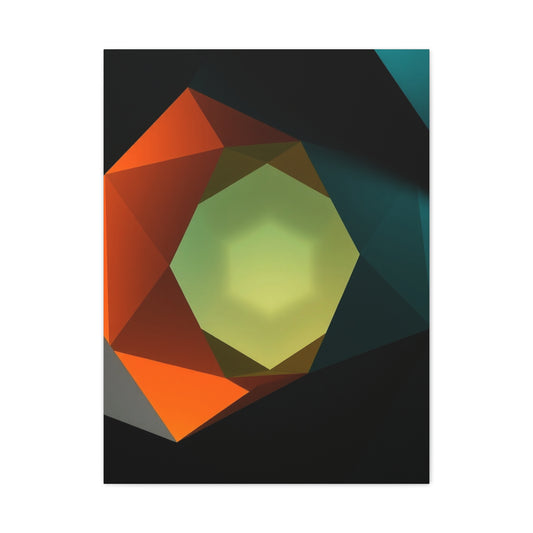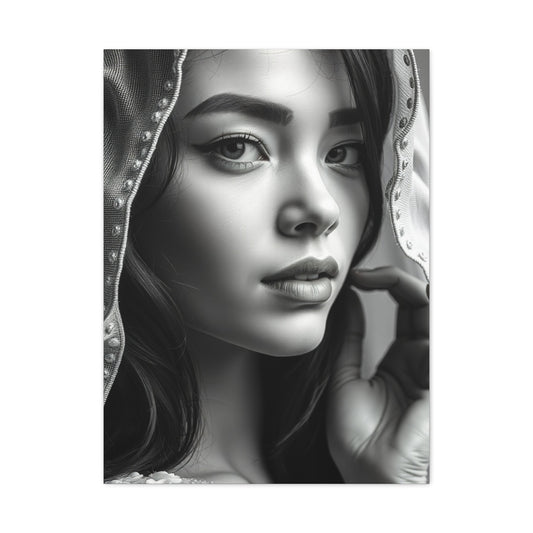The Art of Zen: Meaningful Wall Art to Enhance Your Living Space
Imagine entering a space that immediately inspires calm, balance, and intention. The essence of Zen art lies in its ability to create this feeling, offering a visual language rooted in mindfulness and simplicity. In a modern world saturated with constant stimuli, fast-paced schedules, and endless digital interactions, Zen art provides a much-needed respite. It serves as a quiet antidote to the chaos that can accumulate in both homes and workplaces. By integrating this aesthetic into living areas, offices, dining spaces, and transitional corridors, individuals can cultivate serenity, presence, and an intentional sense of calm.
Zen art transcends mere decoration. It encourages introspection and invites viewers to pause and connect with their surroundings. Its influence can be felt across centuries and continents, from its origins in East Asian monastic traditions to its place in contemporary interior design. Modern interpretations of Zen art are not limited to paintings but encompass sculpture, textiles, ceramics, and mixed media that bring meditative presence into everyday life.
The transformative power of Zen art lies in its minimalism and subtlety. Unlike styles that rely on elaborate patterns or bright, overwhelming colors, Zen art uses simplicity to engage the senses and the mind. Through careful consideration of space, materials, and composition, it emphasizes silence, balance, and stillness, creating an environment conducive to mindfulness and reflection. This form of art aligns seamlessly with the goals of modern interior design, which often seeks to cultivate spaces that are both aesthetically pleasing and emotionally restorative.
The Origins of Zen Art
Zen art has its roots in Zen Buddhism, a spiritual tradition that emphasizes meditation, mindfulness, and direct experience over intellectual analysis or ritual. Originating in China under the Chan Buddhist movement and later flourishing in Japan as Zen, this tradition integrates spiritual practice with artistic expression. Monks and practitioners approached painting, calligraphy, and other forms of art as meditative exercises rather than as decorative pursuits. Every brushstroke, composition, and material choice was intended to reflect an inner state of clarity and presence.
The early development of Zen art was deeply intertwined with nature. Mountains, water, bamboo, and other natural elements were commonly depicted, not merely for their aesthetic value but as symbols of transience, impermanence, and harmony with the environment. The emphasis was on capturing the essence of a subject rather than its exact physical appearance. Artists such as Sesshū Tōyō in Japan became influential figures, using ink wash techniques to convey a sense of spaciousness and tranquility. Their work was not meant to dominate a viewer but to invite contemplation, reflection, and a moment of pause.
Zen art also draws from literary and poetic traditions. Haiku, with its focus on brevity and the beauty of a single moment, influenced visual compositions, encouraging simplicity and the use of negative space. Tea ceremonies, rock gardens, and temple architecture further reinforced these principles, creating environments where every element was deliberate, harmonious, and meaningful. Over time, these aesthetics extended beyond religious settings into secular life, influencing interior decoration, sculpture, ceramics, and other forms of cultural expression.
Core Principles of Zen Art
Zen art is defined by several key principles that distinguish it from other minimalist or modern styles. Understanding these concepts is essential for appreciating their depth and for effectively incorporating them into contemporary interiors.
Simplicity and Minimalism
At its heart, Zen art is an exercise in reduction. By removing the superfluous, it highlights the essential. Minimalism in Zen art is not merely about space but about intentionality and focus. Each element, whether a single brushstroke, a stone sculpture, or a carefully framed photograph, carries meaning and presence. Neutral color palettes, subdued textures, and natural materials all work together to evoke calm and reduce visual noise. When applied to living rooms, offices, or hallways, this simplicity fosters a sense of spaciousness, making the environment feel more open and balanced.
Natural Motifs and Materials
Zen art frequently incorporates representations of natural forces and elements. Mountains, rivers, bamboo, wind, and clouds appear as symbolic motifs reflecting impermanence, resilience, and harmony. Materials such as stone, wood, handmade paper, and clay are favored for their organic textures and authentic qualities. These choices provide a tactile dimension, enhancing the viewer's connection to the natural world. By integrating these motifs into wall art, sculpture, or functional décor, spaces can achieve a grounded, serene energy conducive to reflection and mindfulness.
Embracing Imperfection and Asymmetry
A defining feature of Zen aesthetics is the embrace of imperfection, known as wabi-sabi. This principle values irregularity, roughness, and incompleteness as expressions of authenticity and natural beauty. Uneven brushstrokes, asymmetrical compositions, and textured surfaces are hallmarks of this approach. In interior spaces, incorporating pieces with irregular forms or unexpected placements can introduce subtle depth and character, softening the rigidity often found in modern design. Wabi-sabi reminds viewers to appreciate the fleeting and imperfect nature of life, fostering acceptance and presence.
Spaciousness and the Power of Negative Space
The concept of ma, or meaningful emptiness, is central to Zen art. Negative space is treated as an active component, creating breathing room for the eye and mind. Rather than viewing blank areas as empty or wasted, Zen aesthetics uses them to enhance focus, highlight significant elements, and cultivate a sense of tranquility. Strategically placed artwork in hallways, living rooms, or dining areas can create a meditative rhythm, guiding movement and attention without overwhelming the viewer. This careful balance between form and emptiness is fundamental to creating interiors that embody Zen principles.
Zen Art in Modern Interior Design
Zen art has evolved from its religious and cultural origins into a versatile influence on contemporary interior design. Its principles can be applied in living spaces, workspaces, dining areas, and transitional zones, transforming environments into refuges of calm and contemplation.
Living Room Spaces
In living rooms, Zen-inspired wall art creates a focal point that anchors the space while maintaining serenity. Large-scale ink wash paintings, minimalist sculptures, or natural material installations can transform a high-traffic area into a sanctuary for relaxation. By avoiding clutter and emphasizing deliberate placement, these elements cultivate presence and invite viewers to pause, fostering a sense of balance and tranquility in social and personal moments alike.
Office Spaces
In professional environments, Zen art promotes focus and reduces the mental strain associated with busy workdays. A single meditative piece, such as a monochromatic landscape or calligraphy work, can provide visual relief and encourage mental clarity. Strategically placed office art above a desk or near a window can guide attention, enhance creativity, and support mindfulness practices, contributing to a more harmonious and productive work environment.
Dining Areas
Dining spaces benefit from Zen-inspired art that slows the pace and encourages mindful engagement with meals. Art featuring natural motifs, textured ceramics, or gentle gradients can influence the atmosphere, making meals more contemplative and communal. Soft lighting, neutral palettes, and subtle placement reinforce the calming effect, ensuring that the dining experience aligns with principles of harmony and balance.
Hallways and Transitional Spaces
Often overlooked, hallways are ideal locations for Zen art. Carefully placed paintings or sculptures can transform a passageway into a reflective journey, emphasizing rhythm, flow, and visual continuity. Sparse arrangements at eye level, paired with negative space, create moments of pause that guide movement and encourage contemplation, turning functional corridors into meaningful extensions of living and working spaces.
Evolution of Zen Art Through History
Zen art has a long and rich history that spans centuries, beginning in China with the Chan Buddhist tradition and later flourishing in Japan as Zen. The earliest forms of this artistic practice were not intended as decorative objects but as meditative exercises. Monks and practitioners used ink, brush, and paper to express their inner state of mind, translating spiritual awareness into visual form. The purpose of this art was not to impress viewers with technical skill but to reflect clarity, presence, and mindfulness.
As Zen philosophy migrated to Japan, it absorbed local aesthetic values, resulting in distinctive artistic forms. Japanese Zen emphasized simplicity, naturalness, and impermanence. Gardens, architecture, and ceramics became part of this visual culture, with each element thoughtfully designed to foster contemplation. Artistic expression was no longer separate from daily life; every action—from painting to arranging a tea room—was seen as an opportunity to embody mindfulness and harmony.
Over time, Zen principles influenced broader cultural practices, including calligraphy, poetry, and even martial arts. Artists like Sesshū Tōyō became renowned for their ability to convey depth and tranquility through minimalist brushwork, creating landscapes that combined technical skill with philosophical depth. The spread of Zen aesthetics into secular life eventually shaped interior design, sculpture, and decorative arts, bridging the gap between spiritual practice and everyday living.
Influential Figures and Their Contributions
Several historical figures shaped Zen art and its principles. Sesshū Tōyō, active in the 15th and 16th centuries, is among the most celebrated Japanese ink painters. His work captured both the subtlety of nature and the emotional resonance of meditative experience. Using a monochromatic palette and fluid brushstrokes, Sesshū demonstrated how simplicity could evoke profound depth and complexity.
In addition to painters, poets, and monks contributed to the development of Zen aesthetics. Haiku poets, for example, distilled moments of perception into short, evocative verses, emphasizing impermanence and mindful observation. These literary principles influenced visual compositions, encouraging artists to focus on essential elements and negative space.
Calligraphers also played a key role. In Zen culture, writing was an extension of meditative practice. Each stroke expressed not just form but the mental and emotional state of the creator. Mastery was less about technical precision and more about authenticity, spontaneity, and presence. These contributions continue to inspire modern interpretations of Zen art, from ink wash paintings to contemporary wall sculptures and minimalistic installations.
Techniques in Zen Art
Zen art relies on specific techniques that reinforce its philosophical foundations. Among the most prominent is sumi-e, or ink wash painting. This method uses black ink in various concentrations to create gradations, textures, and subtle shading. Artists often work quickly and deliberately, allowing the brush to express the moment without overthinking. The resulting compositions highlight emptiness and space, inviting viewers to engage actively with the image rather than passively observe it.
Another technique is minimalist calligraphy. Each stroke in Zen calligraphy is deliberate and meaningful, conveying emotion, movement, and thought. The spaces between strokes are equally important, embodying the concept of ma, or meaningful emptiness. Unlike ornamental calligraphy, Zen calligraphy avoids embellishment, focusing on the essence of form and expression.
Ceramics and natural material art also reflect Zen principles. Uneven surfaces, organic shapes, and natural textures convey imperfection and impermanence. Pottery, stone, and woodwork are often left unglazed or minimally treated, allowing materials to retain their authentic character. These tactile qualities engage the senses, providing a more immersive experience than visual observation alone.
Zen Art in Contemporary Interiors
Modern interior design has embraced Zen art for its ability to create serene and mindful environments. The principles of simplicity, asymmetry, and negative space are applied to furniture placement, wall décor, and decorative accents. Living rooms, offices, and hallways benefit from art that is unobtrusive yet compelling, encouraging moments of reflection and pause.
In living spaces, large-scale sumi-e prints or minimalist sculptures serve as focal points, drawing attention without overwhelming the senses. Neutral color palettes and natural materials enhance the sense of calm. In offices, carefully chosen Zen pieces support focus and reduce visual clutter. Even transitional spaces, such as hallways, can be transformed with subtle ink paintings or textured wall panels that guide movement and foster mindfulness.
Dining areas also benefit from Zen art, where natural motifs and calming visuals slow the pace and encourage presence. Art featuring mountains, water, or bamboo complements earthy tones and soft lighting, enhancing the experience of shared meals. In all spaces, the thoughtful application of Zen principles ensures that interiors are not only visually appealing but emotionally restorative.
The Role of Natural Elements
Nature is central to Zen aesthetics. Mountains, rivers, trees, and bamboo appear frequently as motifs, symbolizing transience, resilience, and harmony. Incorporating these elements into home décor fosters connection with the natural world and reinforces the meditative qualities of Zen art. Materials such as wood, stone, and paper add tactile authenticity, grounding spaces in reality while providing visual and sensory interest.
Outdoor gardens, interior plants, and natural textures complement Zen wall art, creating cohesive environments where art, architecture, and nature coexist. By harmonizing indoor and outdoor elements, interiors achieve a balance that encourages mindfulness and tranquility. Natural light further enhances this effect, highlighting textures and surfaces while subtly shifting the mood throughout the day.
Wabi-Sabi and Imperfection
The Japanese concept of wabi-sabi is closely linked to Zen art. It celebrates imperfection, impermanence, and authenticity, encouraging appreciation of irregularity and the passage of time. In the visual arts, wabi-sabi manifests as uneven brushstrokes, rough textures, asymmetrical compositions, and subtle color variations. In interior design, furniture, décor, and wall art reflecting wabi-sabi principles introduce warmth, character, and depth, softening the rigidity of modern spaces.
By embracing imperfection, interiors become more relatable and human. Rather than striving for flawless symmetry or overly polished finishes, Zen-inspired spaces prioritize authenticity, encouraging residents to engage with their environment mindfully and reflectively.
Zen Aesthetics in Modern Wall Art
Zen-inspired wall art is diverse, ranging from ink wash paintings and minimalist calligraphy to mixed-media sculptures and textured panels. Each piece embodies principles of simplicity, balance, and negative space. Placement is crucial: artworks should be positioned to encourage contemplation without crowding the space. Large walls may feature a single focal piece, while smaller areas can accommodate grouped compositions that maintain a sense of openness.
Materials play a significant role. Paper, bamboo, stone, clay, and wood add depth and authenticity, while subtle color variations evoke calm and natural harmony. Even digital prints can emulate traditional techniques, incorporating textures, gradients, and brushstroke effects that resonate with Zen philosophy. Modern techniques allow for versatile applications, including modular panels, backlit art, and sculptural installations that maintain the meditative essence of Zen while fitting contemporary lifestyles.
Zen Art in Office and Workspaces
In professional environments, Zen art provides more than aesthetic appeal; it supports mental clarity, focus, and productivity. A single, contemplative piece placed above a desk or in a common area can reduce stress, encourage mindfulness, and enhance creative thinking. Monochromatic landscapes, abstract brushwork, and minimalist calligraphy are particularly effective in offices, offering visual respite without distraction.
In collaborative spaces, Zen-inspired décor fosters calm interactions and improves workplace harmony. Soft textures, neutral tones, and natural motifs create environments that encourage cooperation, reflection, and thoughtful communication. By integrating Zen principles into office design, organizations can cultivate environments that support both mental well-being and efficiency.
Incorporating Zen Art in Dining and Communal Spaces
Dining areas benefit from the tranquil influence of Zen art. Natural motifs such as water, mountains, and bamboo encourage mindfulness and slower, more intentional engagement with meals. The placement of wall art at seated eye level allows diners to connect with the piece during shared moments, enhancing the overall experience. Soft, diffused lighting accentuates textures and surfaces, reinforcing calm and visual harmony.
Communal spaces, such as lounges or waiting areas, can also employ Zen aesthetics to encourage relaxation and reflection. Minimalist sculptures, textured panels, and strategically placed artwork provide visual interest without overwhelming the environment, fostering a sense of balance and serenity that supports both individual and collective presence.
Zen Art and the Concept of Ma
The principle of ma, or meaningful emptiness, is central to Zen design. Negative space is treated as an active element, providing breathing room for the eye and mind. In interiors, this concept informs furniture layout, wall art placement, and spatial organization. A sparse wall with a single ink painting or sculptural piece can have a profound impact, creating a contemplative atmosphere that engages viewers without overstimulation.
Ma encourages viewers to interact mentally with the environment, noticing subtleties, textures, and details that might otherwise be overlooked. By prioritizing space as a compositional element, Zen interiors cultivate mindfulness and presence, allowing inhabitants to experience both visual and emotional clarity.
Modern Adaptations of Traditional Techniques
While traditional techniques such as sumi-e and calligraphy remain central to Zen art, modern adaptations have expanded its reach. Digital media, mixed-media sculptures, and contemporary prints reinterpret classic forms while maintaining philosophical integrity. Textured panels, modular installations, and three-dimensional wall art bring depth and versatility to interior design.
These modern adaptations allow Zen art to integrate seamlessly with contemporary décor, from minimalist lofts to traditional homes. Artists experiment with scale, materials, and layering, creating compositions that resonate with modern sensibilities while honoring centuries-old principles. The result is a living aesthetic that continues to evolve while preserving the meditative and reflective qualities central to Zen.
Practical Applications of Zen Art in Modern Homes
Zen art is not just a visual aesthetic but a philosophy that can be woven into the design of contemporary interiors. Its principles—simplicity, balance, impermanence, and mindfulness—can transform the atmosphere of a home, creating spaces that promote reflection, relaxation, and intentional living. Applying Zen art effectively requires consideration of scale, placement, materials, and lighting, ensuring each piece contributes to a harmonious whole.
Integrating Zen Art into Living Rooms
The living room is often the heart of a home, a space where both relaxation and social interaction occur. Zen-inspired art can transform this environment into a sanctuary. Large-scale ink wash paintings, monochrome landscapes, or minimalist sculptures work well as focal points. These pieces do not demand attention through complexity or vibrant color but through subtlety and presence.
Furniture arrangements should support the principles of Zen, prioritizing openness and flow. Minimalist sofas, low-profile seating, and uncluttered surfaces complement wall art without competing for attention. Neutral color palettes and natural textures—linen, wood, and stone—enhance the meditative effect of Zen artworks. Proper lighting, both natural and ambient, highlights textures, shadows, and subtle tonal variations in the artwork, creating a dynamic yet calm visual environment.
Placement is crucial. A single, thoughtfully positioned piece above a sofa or console table can define the space without overwhelming it. Smaller works can be grouped in a grid or staggered formation, provided the arrangement maintains negative space to allow the eye to rest. The overall goal is to create a space that encourages reflection, conversation, and emotional presence rather than distraction.
Zen Art in Bedrooms
Bedrooms benefit from Zen art by fostering an atmosphere conducive to rest and mindfulness. Wall art featuring natural motifs such as bamboo, water, or misty mountains encourages calm and introspection. Avoiding overly bright colors or intricate patterns helps maintain a soothing environment.
Positioning art above the bed, on side walls, or opposite windows allows for balanced visual engagement throughout the room. Layering textures, such as a paper or fabric wall panel, adds depth without clutter. Minimalist nightstands and simple bedding complement Zen artworks, supporting an uncluttered, intentional environment. The combination of muted colors, tactile surfaces, and carefully chosen art helps create a space that is visually and emotionally restorative.
Creating Serene Office Environments with Zen Art
Workspaces benefit from Zen-inspired wall art by promoting focus, reducing stress, and fostering mindfulness. A single ink landscape or calligraphy piece above a desk can encourage mental clarity, while textured panels or small sculptures provide visual interest without distraction.
Arranging furniture to maintain openness and facilitate natural light complements the meditative effect of Zen art. Neutral palettes, natural materials, and subtle lighting create a calm atmosphere conducive to productivity. In collaborative office areas, grouped Zen artworks can enhance shared spaces, promoting tranquility and thoughtful communication. Selecting pieces that evoke pause rather than excitement ensures the workspace remains conducive to focus and intentionality.
Dining Spaces and Mindful Meals
In dining areas, Zen art encourages mindfulness and connection during meals. Wall art featuring mountains, water, bamboo, or abstract natural patterns helps slow the pace and encourages reflection. Placement at seated eye level enhances engagement, allowing diners to connect with the artwork without straining or diverting attention from social interaction.
Textured or sculptural wall pieces add depth to dining spaces, while soft lighting emphasizes natural surfaces and subtle tonal variations. Pairing Zen art with natural materials, such as wooden tables and stone accents, reinforces a cohesive and contemplative atmosphere. The combination of art, texture, and lighting transforms dining from a functional activity into a mindful experience, promoting presence and harmony.
Hallways and Transitional Spaces
Often overlooked, hallways and transitional areas provide opportunities for Zen art to guide movement and create rhythm. Sparse ink paintings, vertical sculptures, or textured panels placed at eye level can transform a functional corridor into a contemplative journey.
Consistency in scale, spacing, and materials ensures visual continuity and maintains the meditative qualities of Zen art. Hallways benefit from negative space, allowing the eye to rest and the mind to engage subtly with each element. Even small touches, such as a single natural motif or asymmetrical composition, can elevate a passageway into a meaningful experience that connects rooms harmoniously.
Selecting Zen Art for Your Home
Choosing Zen art involves both emotional resonance and environmental suitability. Consider the mood and function of the space, the natural lighting, and the scale of the walls. Soft-toned landscapes may complement north-facing rooms with gentle light, while bold calligraphy can anchor walls in sunlit areas.
Materials should align with the natural and tactile essence of Zen art. Wood, bamboo, paper, stone, and clay are ideal, whether used in framed prints, sculptural pieces, or wall-mounted panels. Avoid overly ornate frames or elaborate embellishments, as these detract from the simplicity central to Zen aesthetics. The goal is to select pieces that evoke a sense of pause, reflection, and presence, enhancing the emotional and visual harmony of the space.
Arranging Zen Art for Maximum Impact
Arrangement is critical to the success of Zen-inspired interiors. Single focal pieces should dominate a clean wall, drawing the eye without overcrowding the space. Grouped compositions must maintain adequate negative space to prevent visual clutter. Consider asymmetrical arrangements to embrace the wabi-sabi principle, celebrating irregularity and imperfection.
Height and alignment are equally important. Art should be positioned at eye level for optimal engagement. In hallways, repeated elements spaced consistently create rhythm, while in living rooms and offices, strategic placement above furniture establishes visual anchors. Layering textures—such as a paper print above a wooden console or a sculptural panel beside a minimalist shelf—enhances depth while maintaining simplicity.
Combining Zen Art with Other Design Styles
Zen art can harmonize with a variety of design styles, from Scandinavian minimalism to modernist interiors. The key is to preserve the principles of balance, negative space, and simplicity. In Scandinavian-inspired spaces, Zen artworks can complement soft textures, clean lines, and neutral palettes. In modernist environments, minimalist brushwork or abstract ink compositions can temper bold geometric forms, creating equilibrium.
When integrating Zen art with other styles, avoid overcrowding or overcomplicating the space. Allow each piece to breathe and interact thoughtfully with surrounding elements. The goal is a cohesive environment that supports mindfulness, presence, and aesthetic harmony.
Lighting and Zen Art
Lighting plays a crucial role in the perception and impact of Zen art. Natural light enhances textures and tonal variations, revealing subtle gradations and surfaces. Ambient lighting, such as soft wall sconces or concealed LED strips, can accentuate focal pieces without overpowering them. Avoid harsh overhead lights or spotlighting that creates glare or disrupts the meditative quality of the space.
Consider the direction, intensity, and color temperature of light in each room. Warm, diffused light enhances natural materials, while cooler tones may complement monochrome ink art. Proper lighting amplifies the calming and reflective qualities of Zen art, reinforcing the intended atmosphere of presence and serenity.
Textures and Materials in Zen Interiors
Zen art thrives on texture and material authenticity. Paper, bamboo, wood, clay, and stone offer tactile qualities that engage multiple senses. Textured wall panels, fabric prints, or sculptural installations provide depth and invite closer observation.
Combining textures with neutral colors reinforces visual balance while maintaining simplicity. Rough surfaces contrast with smooth planes, and natural imperfections enhance the wabi-sabi aesthetic. By selecting materials that echo the principles of Zen art, interiors achieve cohesion, warmth, and mindfulness, transforming functional spaces into restorative environments.
Seasonal and Dynamic Considerations
Zen art can respond to seasonal changes, reflecting the transience and impermanence central to its philosophy. Artwork with natural motifs—fall leaves, winter landscapes, spring blossoms—can be rotated or adapted to align with the changing environment. Lighting and accessories may also shift with seasons, enhancing the harmony between interior spaces and the natural world.
Dynamic placement and subtle rotation of pieces reinforce mindfulness, inviting inhabitants to notice changes, textures, and nuances over time. This approach encourages ongoing engagement with the space, aligning interior design with the contemplative principles of Zen philosophy.
Maintaining Balance and Minimalism
The essence of Zen art is balance—between presence and emptiness, simplicity and texture, light and shadow. Maintaining this balance requires intentional curation and restraint. Avoid overcrowding walls or layering too many elements. Each piece should contribute meaningfully to the environment, whether through visual appeal, tactile quality, or emotional resonance.
Minimalism does not imply coldness or emptiness; rather, it creates space for reflection and connection. By maintaining clarity in composition, thoughtful placement, and appropriate scale, Zen-inspired interiors cultivate serenity, focus, and aesthetic satisfaction.
Advanced Design Strategies with Zen Art
Zen art offers more than visual appeal; it provides a framework for advanced interior design that prioritizes mindfulness, balance, and intentional living. The goal of integrating Zen principles is not to fill space but to cultivate an environment that promotes mental clarity, emotional calm, and aesthetic harmony. Achieving this requires careful consideration of scale, proportion, composition, and the interplay of materials.
Spatial planning is central to advanced Zen-inspired interiors. Negative space is treated as an essential component rather than an absence. The placement of furniture, artwork, and decorative elements should support movement, encourage pause, and provide breathing room for both eyes and mind. Open layouts with minimal obstruction allow the principles of ma—meaningful emptiness—to manifest, creating a rhythm and flow that enhances both functionality and tranquility.
Incorporating asymmetry thoughtfully enhances visual interest and adheres to the wabi-sabi principle of imperfection. Arrangements should appear natural rather than forced, reflecting organic patterns and irregularity. A wall with staggered artwork, a sculptural installation with uneven surfaces, or furniture arranged in subtle off-center alignment exemplifies this approach. These strategies ensure that each element contributes to a cohesive, dynamic, and contemplative interior.
Integrating Zen Art with Everyday Life
Zen art extends beyond the walls of a home, influencing everyday behaviors and interactions within the space. Mindfulness in interior design encourages inhabitants to engage consciously with their environment. For example, sitting in a living room framed by serene landscapes, textured panels, or subtle sculptural pieces can promote meditation, reading, or quiet conversation.
In offices, Zen-inspired wall art fosters focus and reduces stress, creating an atmosphere conducive to sustained concentration and intentional work. Dining spaces, enhanced by natural motifs and calming textures, encourage slower, more deliberate meals, reinforcing mindful habits. Transitional areas, such as hallways or entryways, guide movement with rhythm and visual cues that cultivate awareness. By extending Zen principles into daily routines, interiors become not just visually restorative but behaviorally transformative.
Selecting Modern Zen Art Pieces
Modern Zen art offers a variety of materials, media, and styles, ranging from traditional ink wash paintings and calligraphy to mixed-media sculptures, textured panels, and digital interpretations. Selecting pieces involves evaluating both aesthetic qualities and emotional resonance. Art should evoke calm, encourage reflection, and harmonize with the surrounding environment.
Materials play a crucial role in maintaining authenticity. Wood, bamboo, paper, stone, and clay provide tactile qualities that enhance sensory engagement. Digital prints and contemporary interpretations can emulate traditional techniques, incorporating brushstroke effects, subtle gradients, and textural overlays to create depth. Size, scale, and placement should align with the principles of Zen, allowing each piece to breathe and interact with surrounding negative space.
When curating a collection, consider consistency in tone and material while allowing room for variation in texture, shape, and motif. A cohesive environment reinforces mindfulness, while deliberate diversity adds depth and intrigue. Rotating artworks according to season or mood can further strengthen the connection between inhabitants, space, and the natural world.
Zen Art in Collaborative and Public Spaces
Beyond private homes, Zen art is highly effective in collaborative and public environments. In offices, coworking spaces, or waiting areas, minimalist artwork, natural motifs, and textured panels create atmospheres conducive to focus, calm, and reflection. Careful curation ensures that artworks are visible without overwhelming the space or creating visual clutter.
In hospitality or communal areas, Zen-inspired décor enhances comfort and promotes presence. Sculptural installations, wall panels, and paintings with negative space provide subtle points of engagement, encouraging guests to slow down and connect with their surroundings. The principles of balance, proportion, and simplicity ensure that these spaces remain aesthetically pleasing while serving functional purposes.
Lighting Techniques for Zen Interiors
Lighting is integral to the perception and impact of Zen art. Natural light reveals textures, tonal variations, and subtle gradations, enhancing the meditative qualities of the artwork. Ambient lighting, including soft wall sconces, recessed fixtures, and concealed LED strips, highlights focal pieces without creating harsh contrasts or glare.
Consider the direction, intensity, and color temperature of light in relation to each artwork. Warm, diffused lighting enhances natural materials and organic textures, while cooler light complements monochromatic or minimalist ink art. Layering light sources—combining ambient, task, and accent lighting—supports the meditative and functional aspects of Zen-inspired interiors, reinforcing presence, depth, and emotional resonance.
Textures and Material Harmony
Texture is a key element in creating Zen-inspired spaces. Paper, bamboo, wood, clay, stone, and textiles provide tactile richness that engages multiple senses. Textured wall panels, fabric prints, and sculptural elements add depth, encouraging closer observation and contemplation.
Maintaining harmony in textures requires balance. Rough surfaces should contrast gently with smooth planes, and natural imperfections should be celebrated rather than corrected. Materials should echo the principles of Zen art, reinforcing authenticity, impermanence, and wabi-sabi aesthetics. By harmonizing textures across floors, walls, and furnishings, interiors achieve both visual cohesion and emotional warmth.
Creating Rhythm and Flow
Rhythm and flow are essential for maintaining balance in Zen-inspired interiors. The placement of artwork, furniture, and decorative elements should guide the eye and body through the space with natural continuity. Repetition of motifs, consistent spacing, and alignment with sightlines establish visual rhythm, while variations in scale, texture, and shape introduce dynamic interest.
Hallways, entryways, and corridors benefit particularly from this approach. A series of staggered ink paintings, vertical sculptures, or textured panels can create a contemplative passage that transforms functional movement into a mindful experience. Similarly, living rooms and offices achieve harmony when focal points and secondary elements interact in a flowing, deliberate manner.
Seasonal and Environmental Considerations
Zen-inspired interiors can adapt to seasonal changes and environmental factors. Rotating artworks, introducing natural motifs aligned with seasonal cycles, or adjusting lighting and textiles enhances the connection between inhabitants and the natural world.
Windows, doors, and open layouts can be leveraged to frame views of outdoor landscapes, reinforcing continuity between interior and exterior environments. Seasonal adjustments—such as warmer tones in autumn or cooler palettes in summer—maintain a sense of harmony and mindfulness throughout the year, reflecting the transient and impermanent nature central to Zen philosophy.
Mindful Living Through Interior Design
The ultimate purpose of Zen art is to support mindful living. Interiors designed with Zen principles encourage inhabitants to slow down, observe their surroundings, and engage with each moment intentionally. Art, furniture, lighting, and materials work together to create environments that foster reflection, presence, and emotional balance.
Daily routines—working, dining, reading, or meditating—are enhanced by the thoughtful integration of Zen-inspired design. Residents are invited to notice textures, tonal variations, and subtle details in both artworks and surroundings. The environment becomes a tool for mindfulness, offering opportunities for pause, contemplation, and deeper connection with oneself and the space.
Combining Zen Art with Modern Technology
While Zen art emphasizes simplicity and natural materials, modern technology can complement these principles. Digital wall art, projection systems, and interactive installations can emulate traditional techniques while providing flexibility in scale, placement, and rotation.
For example, digital ink wash simulations or animated landscapes can transform a wall into a dynamic, meditative focal point. Care must be taken to maintain subtlety, avoiding overly bright or distracting displays. Integrating technology thoughtfully allows inhabitants to enjoy the philosophical and aesthetic principles of Zen art in contemporary contexts, enhancing both visual impact and experiential depth.
Creating Holistic Mindful Environments
Holistic design extends beyond individual pieces of art to encompass the entire environment. Zen-inspired interiors achieve coherence by aligning walls, furniture, textures, lighting, and spatial layout with the principles of mindfulness, balance, and simplicity. Every element is considered intentionally, with attention to proportion, negative space, and sensory engagement.
By fostering harmony across visual, tactile, and emotional dimensions, holistic Zen interiors create spaces that support well-being, presence, and tranquility. Residents are encouraged to interact thoughtfully with their surroundings, cultivating habits of observation, reflection, and intentional living.
Zen Art as a Lifestyle Philosophy
Beyond its role in interior design, Zen art embodies a broader lifestyle philosophy. It encourages mindfulness, acceptance of imperfection, and appreciation of transience. By living in spaces shaped by these principles, inhabitants internalize the values of Zen, allowing them to extend mindfulness into daily life, relationships, and personal practices.
This philosophy emphasizes quality over quantity, presence over distraction, and authenticity over perfection. Homes designed around Zen principles become extensions of this mindset, offering both aesthetic pleasure and opportunities for personal growth.
Final Considerations for Advanced Zen Interiors
Designing advanced Zen interiors requires ongoing attention to balance, scale, and authenticity. Artworks should be curated with intention, furniture arranged to support flow, and materials selected for tactile and visual harmony. Lighting, textures, and spatial relationships must work in concert to maintain serenity and mindfulness throughout the environment.
The integration of seasonal changes, environmental awareness, and subtle technological enhancements allows Zen interiors to remain dynamic while preserving their contemplative quality. By embracing these strategies, homes, offices, and public spaces can transform into immersive environments that inspire calm, focus, and emotional presence.
Conclusion
Zen art is more than a style; it is a philosophy that shapes how individuals experience space, time, and presence. By embracing simplicity, imperfection, negative space, and natural materials, interiors infused with Zen principles become sanctuaries of reflection, calm, and intentional living.
Advanced design strategies, careful selection of modern artworks, mindful integration of textures, lighting, and materials, and attention to seasonal and environmental factors ensure that spaces remain cohesive, balanced, and restorative. Through Zen art, inhabitants are encouraged to slow down, observe thoughtfully, and engage with their surroundings, creating not only visually appealing interiors but also environments that support holistic well-being and mindful living.





















